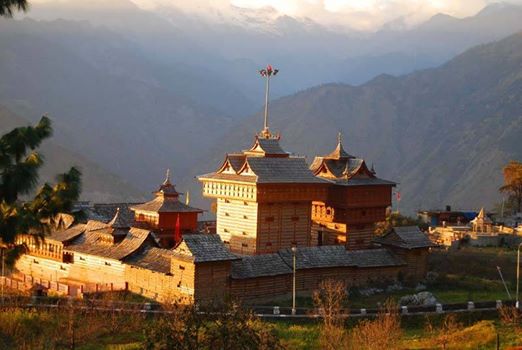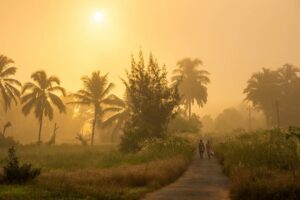The abode of snow or what we know as the Himalayas is a temperamental mistress when it comes to it’s lovers. She is a young mistress that enthralls you or could take your life in a minute. Though the faint of heart steer clear of it’s environs; it’s beauty and challenges are not lost on the adventurous, and the people who call it home. The section of the Himalayas that border India and separate it from the Tibetan plateau has created so much mystery, folk-lore and adventure that, it’s hard to not keep coming back once you have tasted, felt and lived these mountain paths. The Himalayan Shamans, it’s Buddhist Enigma,the erstwhile trading routes that spawned a piece of modern civilization;the raw beauty of it harsh minimalist landscapes and glaciers,the simple villages with their friendly and hospitable people, and the oh so fickle weather all combine into one force that leaves you speechless, happy, broken , triumphant , loved, humbled,elated,tired,calm,full of energy,enlightened and sometimes dizzy – in no particular order. The Five Valley trail or Karma Yatri’s FVT is a motorcycle journey that traverses through the land of the Kinnaur and Spiti. The ride encompasses technically challenging and visually stunning terrain,centuries’ old monasteries, towns for trading caravans, ancient villages,high altitude lakes and a little bit of riding by the seat of your pants as you cross through river streams that cut though the roads, cleared our land slides, Dirt, sand, rocks, steep declines and inclines. Riding like this never hurt so bad or felt so good … To give you a sampler of what we have in mind,we’ve listed some of the stops we make on our Five Valley Journey through the land of dancing rivers
#1> Sarahan. Believed to the gateway to the Kinnaur valley , the quaint town of Sarahan is best explored by a peaceful walk about. It is home to the Bhimkali temple;once the palace of the Rampur Bhushar kings. Today the twin towers serve as a refuge to Bhimkali devotees and travelers alike.The temple architecture reflects a mix of Hindu and Vajrayāna Buddhist statues and decorations, and in the early mornings it is a spectacular sight under the fresh dawn sky..

#2> Kalpa. Nestled at the higher reaches of the Sutlej river valley, the town of Kalpa sits above the Kinnaur district headquarters of Peo. Famed for its production of high quality apples and an abundance of Chilgoza pine forests in the area; this small town perhaps is most loved for the views of the Kinner Kailash range it affords and the legend of it being the winter abode of Shiva..

#3> Nako. At an altitude of 3660 m, Nako is the largest village in the valley of Hangrang surrounded by barren and dusty landscape. The monastery in Nako is situated at the western edge of the town and the story goes that in the 10th century the scholar-translator Rinchen Zangpo was commissioned by the the Tibetan King Yeshe Od of Guge to revive Buddhism in the Trans-Himalayan region. Zangpo went on to build 108 monasteries, engaging Kashmiri artists who created wall paintings and sculptures in these legendary monasteries, one of which was the Nako monastery.
#4>Tabo Monastery Located in the town of Tabo,Spiti, the monastery was founded in 996 CE and has earned the moniker ‘The Ajanta of the Himalayas’ for it’s beauty.The complex houses nine temples built between the late 10th and the 17th century,4 decorated stupas,and cave shrines in the cliff face above the monastery- used by monks for meditation. When Yeshe O’d and his two sons built Tabo Chos-Khor in 996 they tried to blend the provincial and regional characteristics of India and Central Asia. Currently considered to be the oldest continuously functioning Buddhist monastery in India,its significance is second only to the Tholing Gompa(Tibet),in the entire Himalayan region.

#5> Dhangkar. The Dhangkar complex is constructed on a 300 meter high spur that overlooks the confluence of Pin and Spiti rivers – one of the most spectacular settings if ever seen.’Dhang’ or ‘dang’ means cliff, and ‘Kar’ means fort which loosely translates to ‘fort on a cliff’.The Gompa within the complex is considered as the one of the five important Buddhist Monastic centers in Spiti, and the World Monuments Fund selected Dhangkar gompa as one of the 100 most endangered sites in the world(2006). Dhangkar fortress served as the traditional home of the royal family of Spiti – the Nonos – for many generations before falling into disrepair in the late 1800’s, and sadly was destroyed even further by an earthquake in 1975.Now in ruins the fort is still one the best places to see the vast expanses of the Spiti Valley.

#6> Kee Gompa Located at a height of 4116m, Kee Gompa is the largest monastery in Spiti. It serves as a religious training center for Lamas, and is said to have housed a 100 monks in 1855. The monastery was established in the 11th century and with regards to architectural definitions given to various monasteries- Ki or Kee falls in the ‘Pasada’ style,which in description often plays the role of a fort-monastery. Image credit – Natalia Luzuriaga

#7> Kibber Kibber village is located at an altitude of 4205 metres in the Spiti region.The village receives a good deal of mention as the highest inhabited village but the claim has competition from the nearby village of Gette. One unique aspect of the village is the construction of houses using stones instead of mud and brick normally used in the region. It also lies on the periphery of the Kibber Wild life sanctuary – Home to the majestic Snow leopard, the Tibetan wolf and among others-eight species of rare and endangered medicinal plants used in Tibetan Medical systems.Highest village or not Kibber is still worth a visit for the views it offers and the hospitality of the people who call it home.

#8 Kunzum La Kunzum La is a high mountain pass on the eastern Kunzum Range of the Himalayas.It connects the Kullu Valley and Lahaul Valley with the Spiti Valley. From here there is also a 9 km trek to the spell binding Chandra taal lake.






